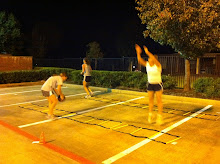
 Many Americans view a healthy lifestyle as something difficult to attain--and something that's not much fun. Traditional diets have taught us that to lose weight, we must count calories, keep track of everything we eat, and deprive ourselves by limiting the amount--and kinds--of foods we eat. Diets tell us exactly what and how much food to eat, regardless of our preferences and individual relationships with hunger and satiety. Dieting can help us lose weight (fat, muscle, and water) in the short term but is so unnatural and so unrealistic that it can never become a lifestyle that we can live with, let alone enjoy!
Many Americans view a healthy lifestyle as something difficult to attain--and something that's not much fun. Traditional diets have taught us that to lose weight, we must count calories, keep track of everything we eat, and deprive ourselves by limiting the amount--and kinds--of foods we eat. Diets tell us exactly what and how much food to eat, regardless of our preferences and individual relationships with hunger and satiety. Dieting can help us lose weight (fat, muscle, and water) in the short term but is so unnatural and so unrealistic that it can never become a lifestyle that we can live with, let alone enjoy!
While very few diets teach healthy low-fat shopping, cooking, and dining-out strategies, many offer unrealistic recommendations and encourage health-threatening restrictions. Even more important, diets don't teach us the safest, most effective ways to exercise; they don't teach us how to deal with our cravings and our desires, or how to attend to our feelings of hunger and fullness. Eventually, we become tired of the complexity, the hunger, the lack of flavor, the lack of flexibility, the lack of energy, and the feeling of deprivation. We quit our diets and gain back the weight we've lost; sometimes we gain even more!
Each time we go on another diet of deprivation, the weight becomes more difficult to lose, and we become even more frustrated and discouraged. Then we eat more and exercise less, causing ourselves more frustration, discouragement, depression. Soon we are in a vicious cycle. We begin to ask ourselves, "Why bother?" We begin to blame ourselves for having no will power when what we really need is clear, scientifically-based information that will help us develop a healthier lifestyle we can live with for the rest of our lives.
Deliberate restriction of food intake in order to lose weight or to prevent weight gain, known as dieting, is the path that millions of people all over the world are taking in order to reach a desired body weight or appearance. Preoccupation with body shape, size, and weight creates an unhealthy lifestyle of emotional and physical deprivation. Diets take control away from us.
Many of us who diet get caught in a "yo-yo" cycle that begins with low self-acceptance and results in structured eating and living because we lack trust in our body and are unwilling to listen and adhere to our body's signals of hunger and fullness. On diets, we distrust and ignore internal signs of appetite, hunger, and our need to be physically and psychologically satisfied. Instead, we depend on diet plans, measured portions, and a prescribed frequency for eating.
As a result, many of us have lost the ability to eat in response to our physical needs; we experience feelings of deprivation, then binge, and finally terminate our "health" program. This in turn leads to guilt, defeat, weight gain, low self-esteem, and then we're back to the beginning of the yo-yo diet cycle. Rather than making us feel better about ourselves, diets set us up for failure and erode our self-esteem.
The attitudes and practices acquired through years of dieting are likely to result in a body weight and size obsession, low self-esteem, poor nutrition and excessive or inadequate exercise. Weight loss from following a rigid diet is usually temporary. Most diets are too drastic to maintain; they are unrealistic and unpleasant; they are physically and emotionally stressful. And most of us just resume our old eating and activity patterns. Diets control us; we are not in control. People who try to live by diet lists and rules learn little or nothing about proper nutrition and how to enjoy their meals, physical activity, and a healthy lifestyle. No one can realistically live in the diet mode for the rest of their life, depriving themselves of the true pleasures of healthy eating and activity.
We Don't Fail Diets; They Fail Us!
Decades of research have shown that diets, both self-initiated and professionally-led, are ineffective at producing long-term health and weight loss (or weight control). When your diet fails to keep the weight off, you may say to yourself, "If only I didn't love food so much . . . If I could just exercise more often . . . If I just had more will power." The problem is not personal weakness or lack of will power. Only 5 percent of people who go on diets are successful. Please understand that we are not failing diets; diets are failing us.
The reason 95 percent of all traditional diets fail is simple. When you go on a low-calorie diet, your body thinks you are starving; it actually becomes more efficient at storing fat by slowing down your metabolism. When you stop this unrealistic eating plan, your metabolism is still slow and inefficient that you gain the weight back even faster, even though you may still be eating less than you were before you went on the diet.
In addition, low-calorie diets cause you to lose both muscle and fat in equal amounts. However, when you eventually gain back the weight, it is all fat and not muscle, causing your metabolism to slow down even more. Now you have extra weight, a less healthy body composition, and a less attractive physique.
Diets require you to sacrifice by being hungry; they don't allow you to enjoy the foods you love. This does not teach you habits which you can maintain after the diet is over. Most diet programs force you to lower your caloric intake to dangerously low levels. The common theory is that if you eat fewer calories than you burn, you will lose weight. But when you eat fewer calories than your body needs to maintain its life-sustaining activities, you're actually losing muscle in addition to fat. Your body breaks down its own muscles to provide the needed energy for survival.
Traditional diets which use calorie restriction to produce weight loss are no longer appropriate. Most weight-loss programs measure success solely in terms of the number of pounds lost per weight loss attempt. Diets don't take into account the quality of the process used to achieve that weight loss or the very small likelihood of sustained weight loss. For long-term good health, you need to move away from low-calorie diets and focus on enjoyable physical activity and good nutrition. Exercising regularly and eating lean-supporting calories, protein and carbohydrates, and reducing fat-supporting calories will not only help you look and feel better, it will also significantly reduce your risk of disease.
America spends billions of dollars on different ways to fix people. If we focused more on prevention and on improving our day-to-day behaviors, we could cut health care costs in half. Contrary to popular belief, leading a healthy lifestyle doesn't have to be difficult; it doesn't have to be painful or time-consuming. Making gradual, simple changes in your diet and physical activity will make great improvements in your health and well-being, and they can drastically reduce your risk of disease.
If your weight management program is to be a success, everything you eat and every exercise you do must be a pleasurable experience. If you're not enjoying yourself, it is unlikely that you'll continue your program. It's that simple. These small, gradual changes are not painful or overwhelming but rather the core of an exciting lifestyle that you will look forward to.
Take the frustration, guilt, and deprivation out of weight management, and allow yourself to adopt gradual, realistic changes into your life that will make healthy eating and physical activity a permanent pleasure. You will soon discover what your body is capable of and begin to look, act, and feel your very best. Good luck and enjoy all the wonderful benefits of a healthy, active lifestyle.
The Glycemic Index (GI) has received a lot of attention lately as the standard for determining "good" carbs vs. "bad" carbs. But it’s actually quite misleading.






















